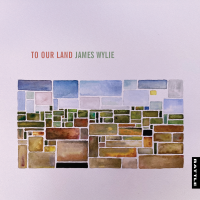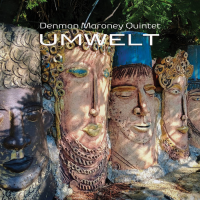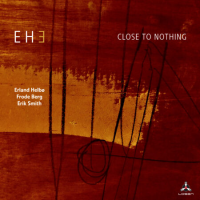Home » Jazz Articles » Album Review » Vienna Art Orchestra: The Minimalism of Erik Satie
Vienna Art Orchestra: The Minimalism of Erik Satie
In the 1980s, Rüegg and the VAO—as well as the now-defunct, Vienna Art Choir—made albums of considerable genius on the Moers Music, hatART and hatOLOGY labels. In 1983 there was the seminal choral album, From No Art To Mo-(z)-Art (Moers), featuring vocalist Lauren Newton, with only three instrumentalists: trombonists Christian Radovan and George Lewis, and multi-re,ed master, Wolfgang Puschnig, backed by a 12-person Vienna Art Choir. That same year the Vienna Art Orchestra, under Rüegg's baton, made From No Time To Rag Time, featuring an ingenious musical crossover that broke the artificial boundaries, corralling the idioms of the so-called classical and jazz musical expressions. Then, a year later, this Satie re-imagination was first released. Like the Mozart re-imagining of a year before, the Satie took considerable courage to make; almost a wild leap of faith. Unlike Mozart, however, Satie was almost anti-convention. The composer turned his back on fashion, creating works that existed in the "now." So dissociated from expression were Satie composition,s that they were called, most appropriately, "furniture" music.
The challenge for Rüegg was to keep his impressions or "reflections," as he calls them, just so; doubly so, as the conductor also composed his own re-imaginings of each of the pieces in question. This is the ultimate genius of the album, that Rüegg was able to make that work without disturbing the minimalist music in Satie's original compositions. Rüegg and the VAO also excel in the majestically improvised cadenza sections. Lauren Newton soars unfettered as she performs feats of breathtaking vocal gymnastics, wielding her pipes as Wolfgang Puschnig does his myriad reeds. Her instrumentation brings choral ingenuity to Satie that is absolutely fresh and wondrous, especially in the "Gnossiennes." Tubaist, John Sass is just as brilliant, as are Christian Radovan and percussionist, Wolfgang Reisinger, in the improvised section of "Reflections On Gnossienne No. 1.,"
But the true genius is in Rüegg's manipulation of the VAO, with arrangements and compositions of considerable unbridled creativity; all that comes to a head on "Satie Ist Mir Im Traum 3 x Nicht Erschienen," the album's most stellar tribute to Erik Satie.
Track Listing
Reflections On Aubade; Reflections On Méditation; Reflections On Sévère Réprimande; Reflections On Idylle; Gnossienne No. 3; Reflections On Gnossienne No. 2; Reflections On Gnossienne No. 1; Satie Ist Mir Im Traum 3 x Nicht Erschienen; Vexations 1801; Vexations 1611; Vexations: 2105.
Personnel
Vienna Art Orchestra
band / ensemble / orchestraLauren Newton: voice; Karl "Bumi" Fian: trumpet, flugelhorn; Hannes Kottek: trumpet, flugelhorn; Christian Radovan: trombone; John Sass: tuba; Harry Sokal: soprano and tenor saxophones, flute; Wolfgang Puschnig: bass clarinet, alto and sopranino saxophones, flute; Roman Schwaller: tenor saxophone, clarinet; Woody Schabata: vibes; Wolfgang Reisinger: gongs, kalimba, tarabuka, triangle; Ima: tambora (8); Mathias Rüegg: leader, conductor, arranger.
Album information
Title: The Minimalism of Erik Satie | Year Released: 2010 | Record Label: Hat Hut Records
Tags
About Vienna Art Orchestra
Instrument: Band / ensemble / orchestra
PREVIOUS / NEXT
Support All About Jazz
 All About Jazz has been a pillar of jazz since 1995, championing it as an art form and, more importantly, supporting the musicians who make it. Our enduring commitment has made "AAJ" one of the most culturally important websites of its kind, read by hundreds of thousands of fans, musicians and industry figures every month.
All About Jazz has been a pillar of jazz since 1995, championing it as an art form and, more importantly, supporting the musicians who make it. Our enduring commitment has made "AAJ" one of the most culturally important websites of its kind, read by hundreds of thousands of fans, musicians and industry figures every month.





















